Making the Most Out of Your International Medical Mission
By Steven Shu, MD, MBA on March, 2020
Published on Minnesota Medical Association: Making the Most Out of Your International Medical Mission
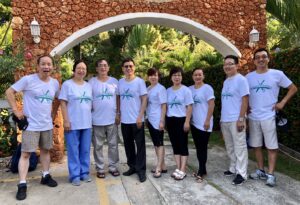
Every mission I’ve made to Haiti, the Philippines and Cambodia has been greatly rewarding. It fills me with joy, pride and awe every time I connect with local collaborators, nurses and former volunteers. The deep friendships forged during the course of each trip, as well as the changes our teams brought to the local communities create memories that will last a lifetime.
I’ve been fortunate in being able to make 13 mission trips and I’ve learned a few things—sometimes the hard way—that can help you decide whether you would like to donate your services and then to cope with some of the difficulties you might encounter.
For most of us, getting proper care when we’re sick or injured is a luxury we can take for granted but for roughly 1.2 billion people around the world, access to life-saving medical treatments is not an option. To help provide affordable and safe treatment options to these communities, medical mission groups work to improve health care conditions and prevent unnecessary deaths.
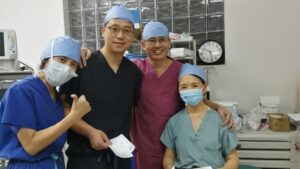
The goal of medical missioning—by both faith-based and non-faith-based groups—is to provide accessible health care to those most in need. While trip length varies by organization and trip locale, most require about one to two weeks. Projects that require pre-trip service lengths of six months to a year, such as Doctors Without Borders, are more suitable for doctors with flexible schedules or those taking sabbatical leave.
The main draw of joining a trip is to make a difference—even if it’s just for one person. While a single trip cannot address the needs of an entire country, mission trips were never intended to fix a problem overnight. Being able to provide aid to even a few individuals should be seen as a success.
A mission trip can also help you refocus your perspective—witnessing the circumstances of those in need can greatly change how you approach your own life. On my past trips, my colleagues and I were forever changed by our experiences, and the strength we gained encouraged us to continue on our path of helping others.
Finding the right medical mission for you
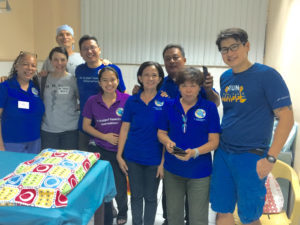
Whether you find a medical mission team through the local faith community, a national medical mission organization or a city-based project, always choose an organization that fits with your ideals and personal circumstances. For example: I’ve grown accustomed to Midwestern winters, so I joined October-December projects in Haiti in order to avoid the country’s extreme summer heat.
If cost is a concern, many nonprofit programs require participants to pay only for their own travel expenses, without any additional donation.
It’s crucial to evaluate and decide if a mission trip is right for you. Along with harsh, physically-draining environments that may lack electricity, running water and communication with loved ones, trips also involve adjustment to a new culture and its customs. I’ve found that the most difficult obstacles to overcome are lack of sleep, extreme weather, neck and back pain caused by long surgery hours, time zone differences, lack of internet/Wi-Fi access and staying strong mentally.
- Lack of sleep. The new environment may expose you to extreme heat, mosquitos, and noise from the indoor air conditioning or from outside. All of these factors may hinder your ability to sleep, so it is important to bring ear plugs and sleep medication.
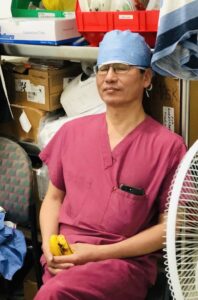
Dr. Shu was extremely tired and fell asleep during lunch time in 2019 Haiti mission. 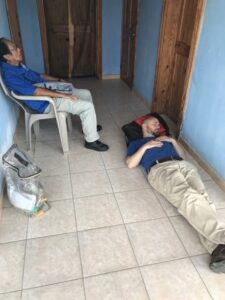
Dr. Ramon Suares and Dr. Tim Zola were exhausted and fell asleep after traveling to their second clinic in 2017 Haiti mission - Extreme weather. Many common destinations for medical mission trips are areas that are close to the equator and that have very hot weather at least part of the year. It’s important to drink water constantly to prevent dehydration. We typically bring water from our hotel in the morning and buy bottled water off the street in the afternoon. It is also advisable to bring a water filter for your refillable water bottle, such as one from the brand LifeStraw.
- Neck and back pain caused by long surgery hours. Make sure you are taking multiple small breaks throughout the day so as not to overly strain your neck and back. Try to keep yourself in an ergonomic position while doing surgeries. You may also consider bringing a travel-size massager to help relieve muscle strain.
- Time zone differences. Haiti has a similar time zone to the United States, so we don’t have much jet lag when we travel there, but countries in Asia and Africa have completely different time zones that can be 10-13 hours ahead of the United States. You can find plenty of advice online about how to deal with jet lag; personally, I find Ambien and melatonin to be effective.
- Lack of internet/Wi-Fi access. The internet available in hotels may not be reliable due to power outages; even when it is working, it can be very slow. Typically, there is no Wi-Fi available in the hospitals and clinics. The best solution is to switch your phone carrier to T-Mobile, which is available in more than 200 countries. Internet speed will still be slower than usual, but it’s better than having no service at all.
- Staying strong mentally. One of the most difficult parts of being on a medical mission trip is staying optimistic. You may find yourself with depressing thoughts and feelings due to the brutal reality of the situation at hand and the limited help that can be provided. I’ve witnessed some doctors quit after a couple trips because of the hopelessness and despair they felt while working in Third World countries. To combat these feelings, focus on the individuals and families you’re working with, so you can see how much of an impact there is on their quality of life. In addition to medical care, we also bring our love to the local patients. If you believe in God, your relationship with him may help you overcome this mental barrier as well.
Preparing for your trip
The easiest way to prepare yourself is to consult with former mission trip volunteers and the organizer of your mission group. Ask about everything from the program’s background to the nitty gritty of trip expenses, what to pack and tips for getting around the area you’ll be in. Make sure you are 100 percent clear on the program’s expectations—what you should expect from the organization, as well as what the organization will expect from you.
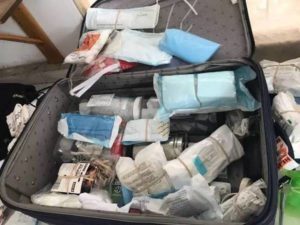
Important pre-departure preparations include:
- Passport and visa
- Vaccinations
- Booking your flight and hotel
- Clothing and supplies
- Commonly used drugs
Documentation
While a U.S. passport allows entry into nearly every country, Brazil, China, Russia, India, Vietnam and most countries on the African continent require their own visa for entry. The passport application process typically takes four to six weeks, although some countries may require months for final approval and processing. Many countries also require medical mission participants to apply for a doctor’s temporary practice permit prior to arrival; your organization should be able to assist you with that.
Immunizations
Your program should be able to present you with a full list of required immunizations. The Centers for Disease Control and Prevention (CDC) is an excellent source for immunization requirements, regional diseases and tips for staying healthy abroad. Another source is your closest travel clinic, which can provide helpful consultations and immunizations. For information on a host country’s potential travel restrictions or warnings, please visit the U.S. Department of State website: https://travel.state.gov/content/travel/en/international-travel.html.
REMEMBER: Immunizations and prophylactic drugs are NOT 100 percent effective in preventing disease, so it’s important to also obtain information about disease prevention.

What to bring
Think about the location, climate and duration of your trip when packing. Avoid bringing expensive or valuable items. Prepare a list of supplies to get in advance, rather than relying on buying locally when you’re at your location, as local prices can be unpredictable.
Personal use: Recommended items for your personal use include: Travel-size toiletry bottles, mouthwash, anhydrous (no water) hand sanitizer, wet tissues, your current medications, a portable first aid kit (antihistamine, Prednisone, antacid, commonly used antibiotics, painkillers, sleeping aids, antidiarrheal and antiemetic medications, antibiotic ointment, bandages), toilet paper and vomit bags.
Two years ago during a Philippines mission trip, I slipped and fell off a boat, causing a serious soft tissue contusion and skin rupture on my leg. My first aid kit was extremely helpful in this situation, as I was able to immediately disinfect and bandage the wound before taking some painkillers.
Motion sickness should also be taken seriously. When extreme heat is combined with non-air conditioned vehicles and unpaved, bumpy roads, motion sickness and vomiting can take a toll on your body before your day has even started. Be sure to bring a few brown paper bags or vomit bags just in case. Also, many third world countries are BYOTP (Bring Your Own Toilet Paper), so keep that in mind.
Medical supplies: The fundamental rule for traveling to any Third World country is the same: If you need it, you’d better bring it, as medicine and supplies are usually expensive. Your medical team should expect to bring all needed supplies, from surgical devices and anesthetics to batteries and sterile gloves. If cost is a concern, there are a number of ways to get free or low-cost medication:
- Contact the pharmaceutical company’s representative
- Apply for free medications through nonprofit organizations supporting the medical mission
- Use nearly expired drugs
- Purchase from private pharmacies or clinics at wholesale prices
Be sure to evenly pack different back-up drugs in a few separate boxes, in case luggage arrives late or is lost. Clearly label boxes as to which supplies are in them. During a trip to Haiti, one of my team members couldn’t find the bottle of anesthetic before surgery. As you can imagine, lacking anesthetic can put a halt to any and all surgery plans. Luckily, it was a false alarm and the anesthetic was found in time.
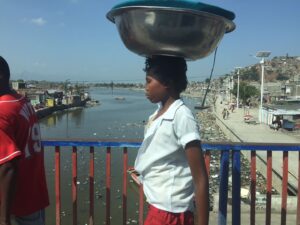 Local culture
Local culture
You need to learn about and adjust to the culture of the country you’re traveling to before and during your time there. You will understand your surroundings better and, more importantly, you will be less likely to offend the local community you’re trying to help. Familiarizing yourself with customs and rituals will increase your chances of being accepted by the local people and, in turn, allow you to help in a more efficient manner.
Other Precautions
Assume fertility – At many mission trip sites, birth control is limited or nonexistent. It’s safest to assume that all women of childbearing age may be pregnant, until proven otherwise. Don’t use Class C and Class D drugs with a female patient, unless she is postmenopausal or has had a tubal ligation or hysterectomy..
Local Food – In Haiti and many parts of Africa, volunteers are asked to abide by this crucial principle: “Boil it, peel it or forget about it.” Apart from hotel food or food you bring yourself before arrival, you should not consume anything given to you. Even when eating hotel food, it’s best to avoid cold dishes.
Bring Snacks – Medical workers are usually on their feet for many hours and too busy to eat meals on time. Working in hot weather without eating properly can take a toll on you. Bring with you protein bars, trail mix and other pre-packaged snacks that are both nutritious and easy to carry.
Tipping – Bring a generous amount of one-dollar bills with you. For many local residents, a dollar is considered a generous tip.
